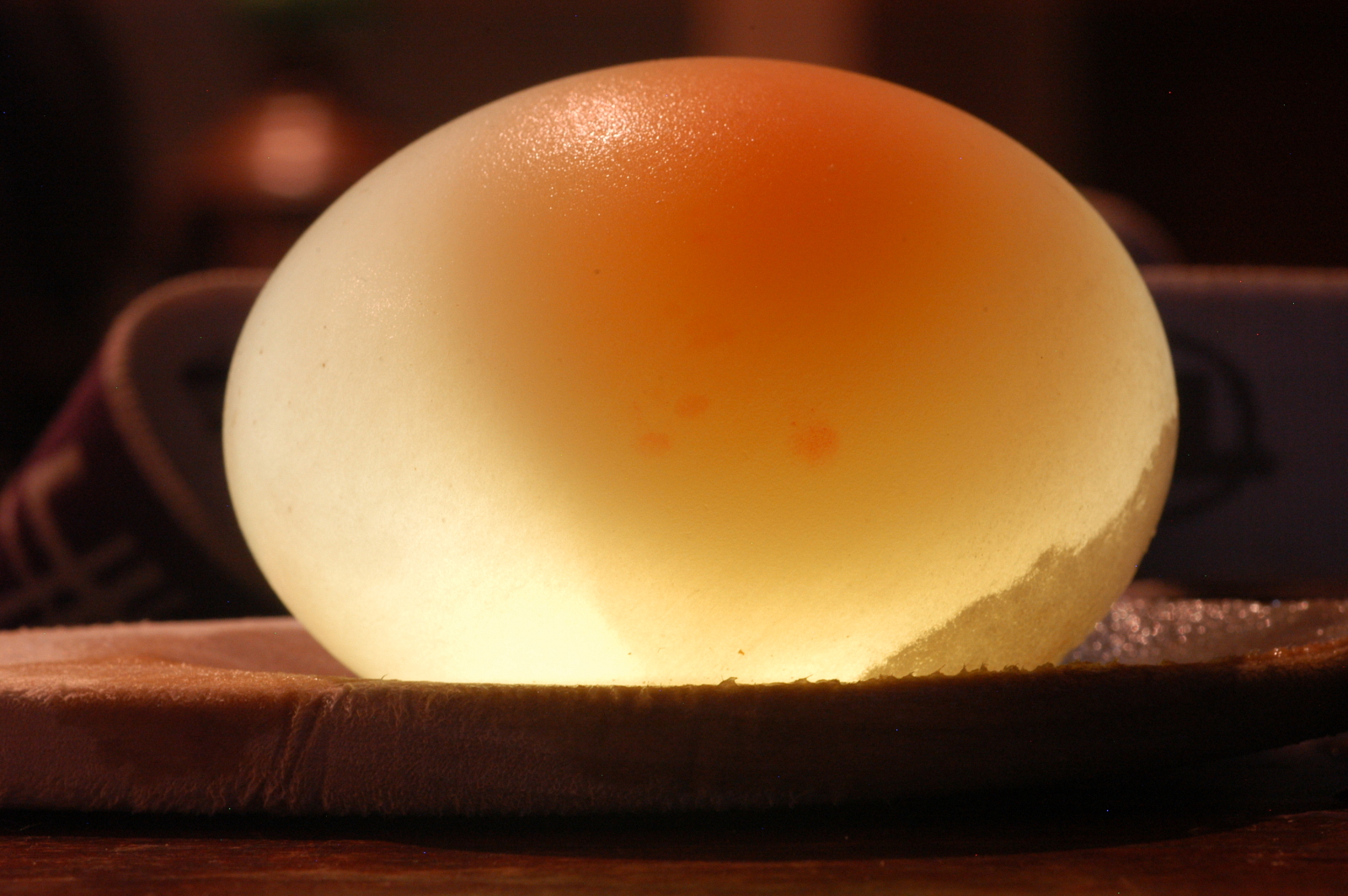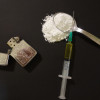Eggsperiment 2: Naked eggs
Interview with
Eggs shells are notoriously tough and brittle, but there is a way to remove the  hard parts while leaving the egg intact. All you need is a fair amount of vinegar and 24 hours, as Georgia Mills explained to Kat Arney...
hard parts while leaving the egg intact. All you need is a fair amount of vinegar and 24 hours, as Georgia Mills explained to Kat Arney...
Georgia - Well Kat, you're a Naked Scientist, so I thought I'd make you a naked egg. If you want to do this at home, all you need is a normal egg and a cup of vinegar and you need to put the egg in the vinegar for about 24 hours.
Kat - Do you need to have it completely covered by the vinegar?
Georgia - Completely submerged, yes. I made one earlier and I've got it in this small container here. so, if you'd like to open it up and look inside...
Kat - Okay, so right straightaway, I've got the really pungent smell of vinegar in my nostrils. There's all this kind of weird foam, kind of scummy foam on the top and I can see bubbles all over the egg, all over the egg shell. I'm going in, I'm going to pick it up. AHHH, vinegar everywhere! Right, it's egg-shaped. It's rather anaemic egg colour, but it doesn't feel like an egg. This is kind of squishy and soft. It feels almost like one of those kind of gummy toys that you use to get. What's going on here?
Georgia - Like I said, this is a naked egg. So, it's lost the hard part of its shell. This is because vinegar is an acid and the shell is made of calcium carbonate. When this two go together, they make a reaction which creates carbon dioxide. That's the bubbles you saw.
Kat - So, the carbon dioxide explains the bubbles but what about that weird soft shell? What's happened there?
Georgia - Well, a shell is made of this calcium carbonate scaffolding with the egg membrane inside it. What we've done is we've taken away that scaffolding because it's reacted with the vinegar to form calcium acetate which is dissolved in the rest of the liquid, leaving behind a squishy, gooey membrane.
Kat - I guess if chickens are making these hard calcium carbonate eggs, they must need to have a lot of calcium or something. Do they eat chalk or something?
Georgia - As far as I know, they don't eat chalk but they do have to eat a lot of extra calcium. In fact, when birds themselves are ovulating, they tend to borrow calcium from their bones. You can actually tell what gender a bird is or even a dinosaur because they are ancient birds really, just from looking at their bones.
Kat - When I went to the Natural History Museum to meet Sophie the Stegosaurus a couple of weeks ago, yeah, the person who was working on her bone said, "Oh, we can tell that she wasn't ovulating because she didn't have those characteristic signs." So fascinating stuff but meanwhile, I've got one hardboiled egg for my tea and do you know what Georgia, I don't think I'll have that one, thanks.
Georgia - That's one for me then.
- Previous Flu-resistant GM chickens
- Next The Easter bunny









Comments
Add a comment